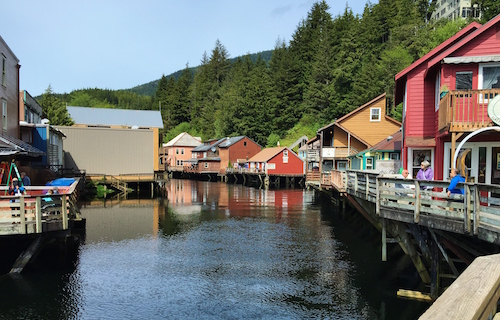Senator Lisa Murkowski Remarks to Arent Fox/GWU Energy Policy Forum
June 5, 2012 ***As Prepared For Delivery***
Senator Lisa Murkowski Remarks to Arent Fox/GWU Energy Policy Forum
June 5, 2012 ***As Prepared for Delivery***
Good morning and thank you, Bob, for that kind introduction. A special thanks to Arent Fox and George Washington University for sponsoring this forum.
Senator Dorgan and Senator Bennett – it’s good to see you both again, and I appreciate your continued efforts to improve our nation’s energy policy. I enjoyed working with both of you on the Energy and Natural Resources Committee.
I understand that you’ve invited me here to give a general outlook on energy policy. What is certain is that a lot of members from both parties have been thinking through legislative responses to our various energy challenges. For all the progress we’ve made, those challenges remain great: in recent years alone, we’ve been starkly reminded of the need to keep energy affordable, to ensure the safety of its production, and to maintain balance in the federal regulations affecting its use.
Equally true is that for all the talk about energy policy, there has not been much action, especially when it comes to legislation in the Senate. One of the most common refrains that you’ll hear today in discussions of energy policy is that the United States does not really have one at the federal level – at least, not something that can be described as long-term or coherent.
Recognizing that, for the past year I’ve worked with my Energy Committee staff to look at ways to renew federal energy policy. We started out by looking at the energy plans put forward by each administration, and the energy legislation that has passed each Congress, since the 1970s. We looked at the resources the United States has, and how long those could last us. We looked at federal policies to identify gaps and negative trends. We looked at how energy affects our economy, and its critical importance to growth and prosperity.
Today I am more convinced than ever that there are many improvements that can be made. And I’m also convinced energy policy should not – and cannot – be a partisan issue. Instead, it must be an area of agreement between parties and across administrations.
As for energy itself, our goals should to be to make it as abundant, affordable, clean, diverse, and secure as possible.
Abundant energy will allow us to meet growing demand and increasing standards of living, both here and around the world.
Affordable energy is a ‘must’ for families and businesses – and our nation’s broader ability to attract investment, manufacturing, and the industries of the future.
I probably define ‘clean’ energy a little bit differently than many of you and some of my colleagues, but further improvements in this area are important. Our nation has dramatically reduced pollution over time, and that will continue to be the case in the future.
Diverse energy, drawn from a number of sources and locations, will help safeguard against supply shortages and price shocks.
Secure energy, produced domestically, will provide us with a stronger hand on the international stage, tamp down volatility, and ensure that fewer and fewer dollars flow out of our economy.
It will take time, patience, and – yes – new federal legislation to achieve these goals. But we need to be serious about reaching them, because our country’s future strength, prosperity, and competitiveness are on the line.
One thing I won’t do is stand here and tell you which resources, which technologies – or even which exact policies – will enable us to meet our energy goals. Some of that will be laid out in the energy plan I intend to release this summer. For now, I’ll simply say that it’s inappropriate for the federal government to focus on one technology, to the exclusion of others. Markets and consumers will make the choice far better than anyone else. What policymakers should focus on instead is outcomes, and we should be open to a number of routes that could help us get there.
In terms of finding legislative success, there are six very important characteristics that should be kept in mind.
First, the committee process exists for a reason. The last two major energy bills to be signed into law – in 2005 and 2007 – were drafted largely by congressional committees. It can be tempting to form a ‘gang’ to work on energy legislation, but those efforts generally fall short. Committees have ideas, expertise, and simply produce a better product. If markups are held regularly, quite a few bills can make it to the floor.
Second, our legislative efforts need to be balanced. It’s difficult to see legislation purely focused on a single technology, subsidy, or priority drawing enough support to pass. To find success, we will need to pair legislation that increases oil and gas production on federal lands with legislation focused on innovation. If we can agree to do that, we will have the makings of a package that the most members will be most comfortable with.
Third, we need to make some hard decisions about the extent of the federal government’s role. The past several years have seen remarkable advances in new technologies like horizontal drilling and hydraulic fracturing. It’s true that industry did most of the work in advancing those technologies – and it’s also true that the government played a role in the earliest stages of development, when there was less reason for the private sector to be interested. These examples should be applied today. The federal government can help fund research that would otherwise not be undertaken, but our job is not to offer subsidies that never end or subsidies that prop up a technology every step of the way to commercialization. A good example is methane hydrates – Conoco Phillips and DOE partnered to test a prospect on the North Slope and it was successful. But this will never involve the government mandating that states buy energy from methane hydrates; it will never involve federal payments to companies to produce or deliver them.
Related to that is my fourth point, that our energy policies must pay for themselves. The tens of billions of dollars contained in the 2009 stimulus for ‘clean energy’ have had much less of an impact than projected, and many taxpayers are rightly unhappy with the results of that spending. With our nation now more than $15 trillion in debt, we simply don’t have the luxury to spend freely any longer. Instead, we will need to be creative by addressing supply and demand at the same time. I’m confident that a concept embedded in my ANWR legislation – using the revenues from greater domestic oil production to help offset spending on energy R&D – would meet this test.
Fifth, we need to avoid legislation that directly or indirectly increases the price of energy. High gasoline prices have stretched families and businesses to the brink. Electricity prices have also been rising, adding to that pain. Given how important energy is to our economy – given how it helps to determine the price of nearly all other goods and services – our attention should be devoted to policies that will lower the cost of energy, not raise it even further.
Finally, the fate of energy legislation will ultimately depend on whether or not it is actually brought up for consideration on the Senate floor. For nearly four years running, we have not had a debate on comprehensive energy legislation on the Senate floor. Last Congress the Energy Committee reported dozens of bills – including a comprehensive package – that sat on the calendar for months. This Congress, it is shaping up much the same. We’ve reported dozens of bills on a bipartisan basis, only to see them languish on the floor. Even as the House passes bill after bill – addressing both traditional and renewable energy – the best the Senate has mustered is brief debate on a handful of energy-related amendments that were called up during debate over the highway bill. If we want to find success on energy policy, the Senate will have to do better than that. It seems easy, and it seems obvious, but we will have to set aside some time to actually debate legislation.
Some of you are probably wondering whether that’s likely happen this year. I’d like to think the Senate can find time over the next six months to debate energy, but with eighteen months having passed already, it doesn’t seem likely. Some believe the expected lame duck session is a possibility, but even that doesn’t look good at this point. Much of our attention is already shifting to the so-called ‘fiscal cliff’ that we’re hurtling towards, as decisions about $7 trillion worth of taxes and spending will need to be made before the end of this year. There may be time for an energy-related amendment here and there, but the bulk of our time will almost certainly be taken up on other concerns.
The six steps I’ve outlined here should not be difficult for either party to accept or accomplish. They fall largely in line with what Americans are asking of us, and they do not dramatically restrict the legislative options open to us. One good sign is that more and more of us are talking about a true ‘all of the above’ policy – even the president, even though Republicans developed it. Now we all need to step up and show that it’s a serious goal. We need to take our words and translate them into meaningful policies.
With the Senate largely inactive on energy legislation for more than three years running, I’ve had a lot of time to think about what makes good policy. It’s a good sign that all of you are thinking about this, as well. We have serious challenges to overcome, and it will take all of us – working together, forging consensus – to ensure that our future energy supply can meet the diverse demands of a prosperous nation and a growing world.
Thanks again for the invitation to join you today.
###








